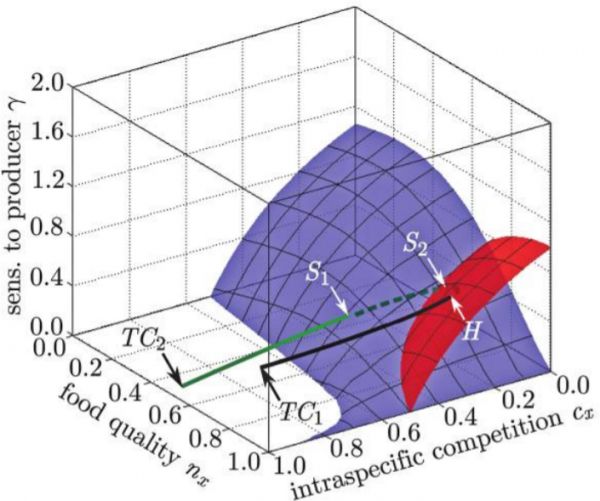stiefs2010food
Food Quality in Producer‐Grazer Models: A Generalized Analysis
Dirk Stiefs, George A. K. van Voorn, Bob W. Kooi, Ulrike Feudel and Thilo Gross
The American Naturalist 176, 367-380, 2010
Stoichiometric constraints play a role in the dynamics of natural populations but are not explicitly considered in most mathematical models. Recent theoretical works suggest that these constraints can have a significant impact and should not be neglected. However, it is not yet resolved how stoichiometry should be integrated in population dynamical models, as different modeling approaches are found to yield qualitatively different results. Here we investigate a unifying framework that reveals the differences and commonalities between previously proposed models for producer‐grazer systems. Our analysis reveals that stoichiometric constraints affect the dynamics mainly by increasing the intraspecific competition between producers and by introducing a variable biomass conversion efficiency. The intraspecific competition has a strongly stabilizing effect on the system, whereas the variable conversion efficiency resulting from a variable food quality is the main determinant for the nature of the instability once destabilization occurs. Only if the food quality is high can an oscillatory instability, as in the classical paradox of enrichment, occur. While the generalized model reveals that the generic insights remain valid in a large class of models, we show that other details such as the specific sequence of bifurcations encountered in enrichment scenarios can depend sensitively on assumptions made in modeling stoichiometric constraints.

Figure 1: Bifurcation surfaces from a generalized model help to understand why several conventional models of the producer-grazer system provide seemingly disparate predictions.